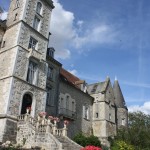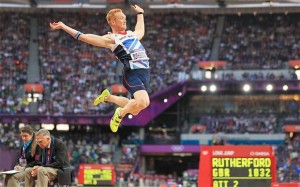By Cindy Vallance @cdvallance
I couldn’t help but think of the University of Kent during a recent trip to France. I stayed at a hotel one night that had an intriguing history.
 The hotel was once a wing of a fortified castle constructed in the 11th century by Robert de Dreux, grandson of Louis VI, King of France. The castle was passed down through various royal family members and enjoyed by kings, from Louis XII to Charles IX, for 200 years through to the 16th century. Its history then became more volatile until the 18th century when the castle was inherited by Philip Egalite who in his efforts to seek approval from the Republicans ordered the partial demolishment of his own chateau and sold many fixtures and furnishings from the castle. The present chateau, once a wing of the Royal castle, rose again through restoration in 1863 and was ultimately converted to a hotel in 1956. Further refurbishment was continuing when I stayed there; rooms were being redecorated and a spa was being added to the site that will include underfloor heating (harkening as far back as Neolithic times). Restoration work was also underway on the existing ruins to preserve a lasting legacy for those who visit.
The hotel was once a wing of a fortified castle constructed in the 11th century by Robert de Dreux, grandson of Louis VI, King of France. The castle was passed down through various royal family members and enjoyed by kings, from Louis XII to Charles IX, for 200 years through to the 16th century. Its history then became more volatile until the 18th century when the castle was inherited by Philip Egalite who in his efforts to seek approval from the Republicans ordered the partial demolishment of his own chateau and sold many fixtures and furnishings from the castle. The present chateau, once a wing of the Royal castle, rose again through restoration in 1863 and was ultimately converted to a hotel in 1956. Further refurbishment was continuing when I stayed there; rooms were being redecorated and a spa was being added to the site that will include underfloor heating (harkening as far back as Neolithic times). Restoration work was also underway on the existing ruins to preserve a lasting legacy for those who visit.
So why did this make me think of Kent? For me, the castle/chateau and its many transitions throughout history tell me a story of survival and of success. The chateau has reinvented itself multiple times while still retaining an appreciation and sense of its colourful and rich history.
When I came back to work, I couldn’t help but notice afresh the building and renovation work happening here at Kent and the hive of activity within the walls where staff and students are making decisions about what actually happens here.
As we continue to find our way through times of uncertainty for the higher education sector, what buildings, traditions, practices and offerings will we retain and what will we change to meet the needs of our future students? As we think about Kent’s 50th anniversary in 2015, we are given the opportunity to consider what our story has been and what our story will be 5, 10, or 50 years from now. What will Kent look like – a crumbling ruins or an exceptional destination that is proud of its heritage and that looks unwaveringly to its future? I personally firmly believe that our collective talents, knowledge, and commitment will serve us well in preserving Kent for generations to come.


